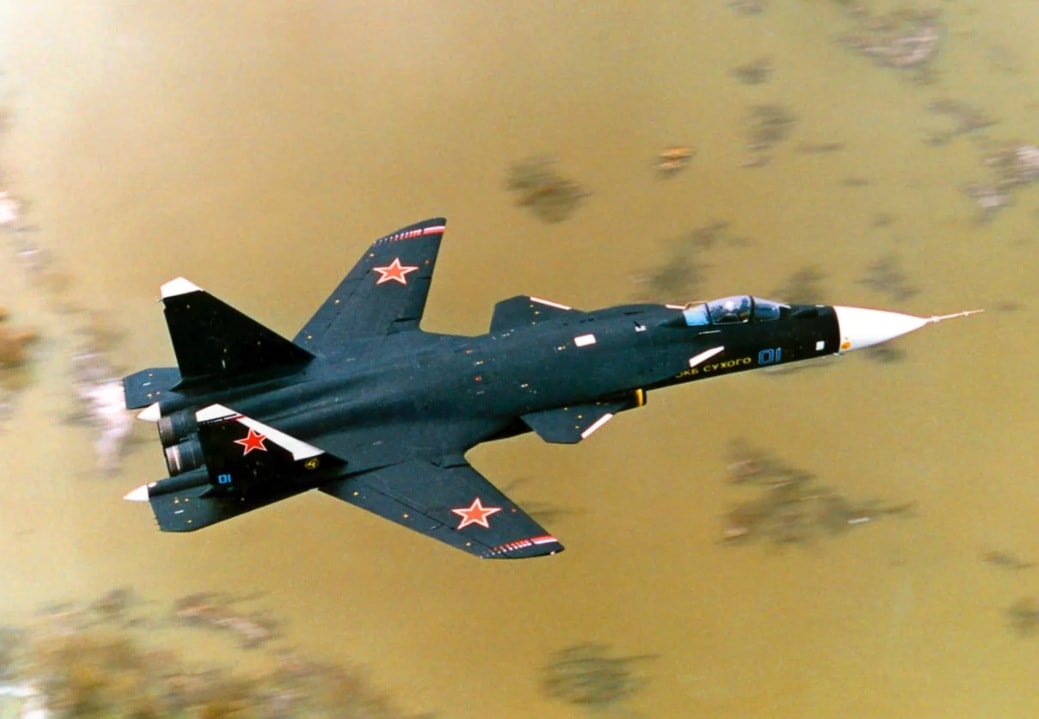The Su-47, a fighter jet with a unique swept-wing design, has left a lasting mark on military aviation. But why did Russia build only one, and what are the technological lessons behind it?

In the history of the development of the world's military aviation industry, there have been aircraft models that were breakthroughs in design and technology, but their fates were quite miserable when they only stopped at the testing stage or were produced in limited quantities.
According to the independent news agency UNIAN (Ukraine), the Russian experimental fighter Su-47 Berkut is a typical example. With its unique forward "swept wings", the Su-47 has made a strong impression on maneuverability, but why did the Russian Federation build only one prototype?
According to military expert Chris Osborne, a former Pentagon adviser, although the Su-47 did not enter service for long, the technologies and aerodynamic lessons it brought had a profound influence on the development of two of Russia's most modern fighters today: the fourth-generation Su-35 and the fifth-generation Su-57.
The most distinctive feature of the Su-47 is its forward-swept wing design. According to Mr. Osborne, this design enhances maneuverability, provides an advantage in lift, and reduces the length of the aircraft's runway. Tests have shown that the Su-47 is capable of reaching Mach 2.2 (2.2 times the speed of sound) and still maintains excellent maneuverability at subsonic speeds.
Science Focus magazine also described the maneuverability advantages of the swept-back wing, which allows it to change its angle of attack and flight path quickly during combat. This design also allows the aircraft's nose to point higher without fear of losing lift and falling into a dangerous spin.
Although it was only a research and development project that emerged in the late 1990s, the Su-47 has played a key role in shaping the two "stars" of the Russian air force, the Su-35 and Su-57. Mr. Osborne commented: "Some details may be related to advanced aerodynamic concepts and new techniques. However, the lessons learned from the Su-47 have contributed to improving the performance of two of Russia's most advanced aircraft."
The former Pentagon adviser stressed that the exact impact of the Su-47 on the Russian aircraft mentioned above is difficult to fully determine. However, the significant improvement in the flight performance of the Su-35 and Su-57 is a clear demonstration of the influence of the Su-47 project.
"As a modernized or high-speed new-generation Su-27 fighter, the Su-35 is capable of competing with the F-22 in terms of speed and thrust-to-weight ratio," Mr. Osborne asserted. The World Defense publication even rated the Su-35 as the aircraft with the highest thrust-to-weight ratio in the world, excluding the US F-22. The ratio of the Su-35 is 1.30, compared to 1.37 of the F-22.
“The Su-35’s recorded speed shows that the Su-47 testbed was short-lived and its technologies formed the basis for the development of the Su-35,” Mr. Osborne noted.
So why was only one Su-47 built? While the analysis does not directly answer this question, the information provided suggests that the Su-47 was primarily intended as a technology testing platform.
The inverted wing design, while offering superior maneuverability, can come with technical challenges and more complex production costs than conventional swept wings. Russia may have not continued to develop and mass produce the Su-47 because it has gathered enough data and experience from this single prototype to apply to more realistic fighter projects such as the Su-35 and Su-57.
In addition, with the development of technology, when the speed of American and Western fighter models is increasingly improved, the Su-47 gradually shows signs of losing power. Although made of 90% composite materials, the wings of the Su-47 still have the potential risk of breaking off from the body at any time if flying at too high a speed. This risk, combined with the high cost in the context of the difficult Russian economy, has prevented the Su-47 from being mass produced.
In addition, focusing resources on projects that are more applicable and more relevant to the overall military strategy may also be an important reason. The Su-35, as a 4++ generation multirole fighter, has proven its capabilities on many fronts. Meanwhile, the Su-57 represents the fifth generation of stealth fighters, the future of the Russian air force.
In short, although only one was built, the experimental Su-47 Berkut fighter left a deep mark in the history of Russian military aviation development. With its unique swept-wing design, it opened up new directions in aerodynamic research and served as an important technological foundation for the creation of modern fighters such as the Su-35 and Su-57.
The fact that only one Su-47 was produced may be due to its excellent performance as a test aircraft, providing valuable lessons for Russia to continue to advance in the field of advanced fighter aircraft construction.